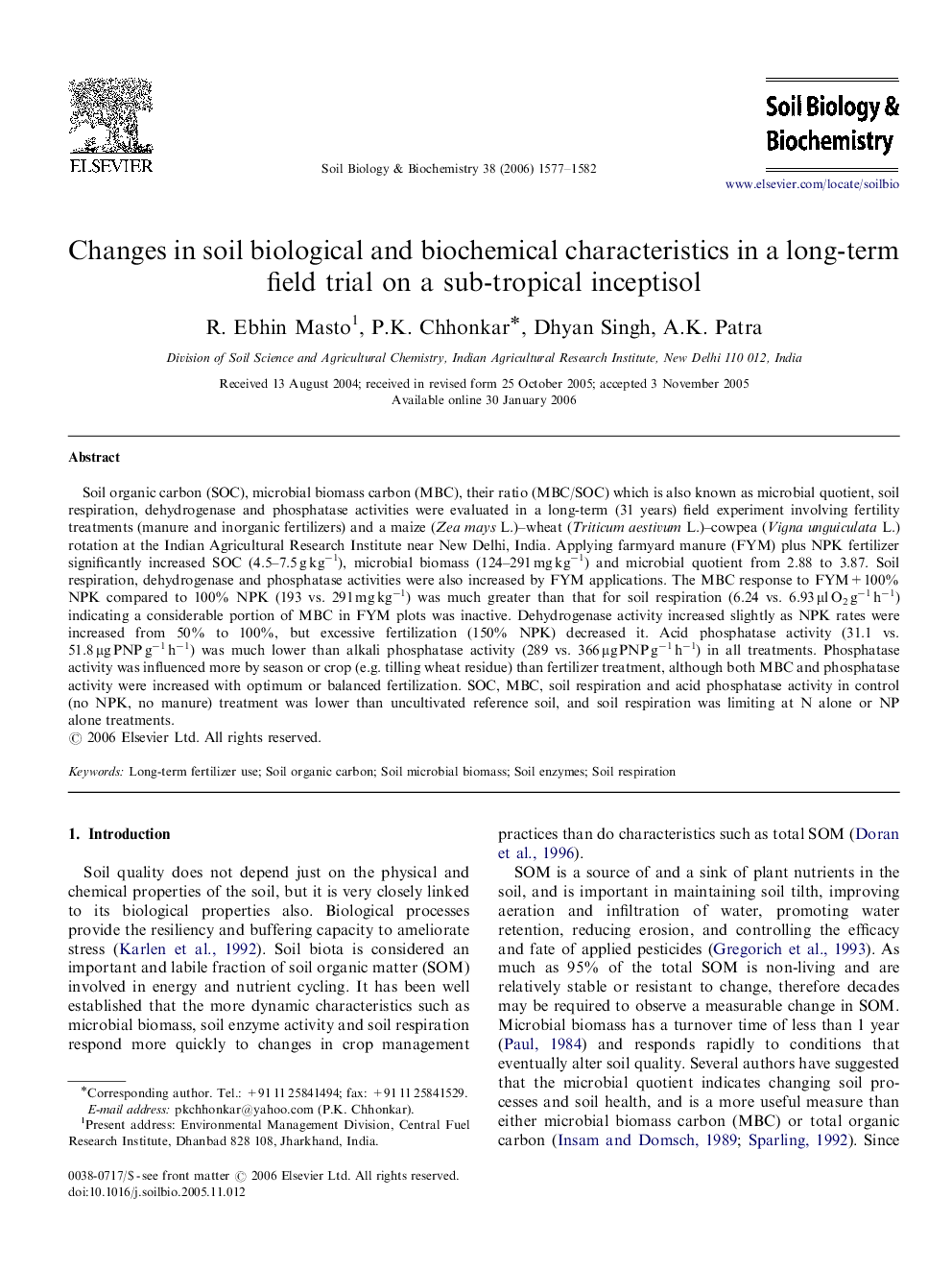| Article ID | Journal | Published Year | Pages | File Type |
|---|---|---|---|---|
| 2026561 | Soil Biology and Biochemistry | 2006 | 6 Pages |
Soil organic carbon (SOC), microbial biomass carbon (MBC), their ratio (MBC/SOC) which is also known as microbial quotient, soil respiration, dehydrogenase and phosphatase activities were evaluated in a long-term (31 years) field experiment involving fertility treatments (manure and inorganic fertilizers) and a maize (Zea mays L.)–wheat (Triticum aestivum L.)–cowpea (Vigna unguiculata L.) rotation at the Indian Agricultural Research Institute near New Delhi, India. Applying farmyard manure (FYM) plus NPK fertilizer significantly increased SOC (4.5–7.5 g kg−1), microbial biomass (124–291 mg kg−1) and microbial quotient from 2.88 to 3.87. Soil respiration, dehydrogenase and phosphatase activities were also increased by FYM applications. The MBC response to FYM+100% NPK compared to 100% NPK (193 vs. 291 mg kg−1) was much greater than that for soil respiration (6.24 vs. 6.93 μl O2 g−1 h−1) indicating a considerable portion of MBC in FYM plots was inactive. Dehydrogenase activity increased slightly as NPK rates were increased from 50% to 100%, but excessive fertilization (150% NPK) decreased it. Acid phosphatase activity (31.1 vs. 51.8 μg PNP g−1 h−1) was much lower than alkali phosphatase activity (289 vs. 366 μg PNP g−1 h−1) in all treatments. Phosphatase activity was influenced more by season or crop (e.g. tilling wheat residue) than fertilizer treatment, although both MBC and phosphatase activity were increased with optimum or balanced fertilization. SOC, MBC, soil respiration and acid phosphatase activity in control (no NPK, no manure) treatment was lower than uncultivated reference soil, and soil respiration was limiting at N alone or NP alone treatments.
